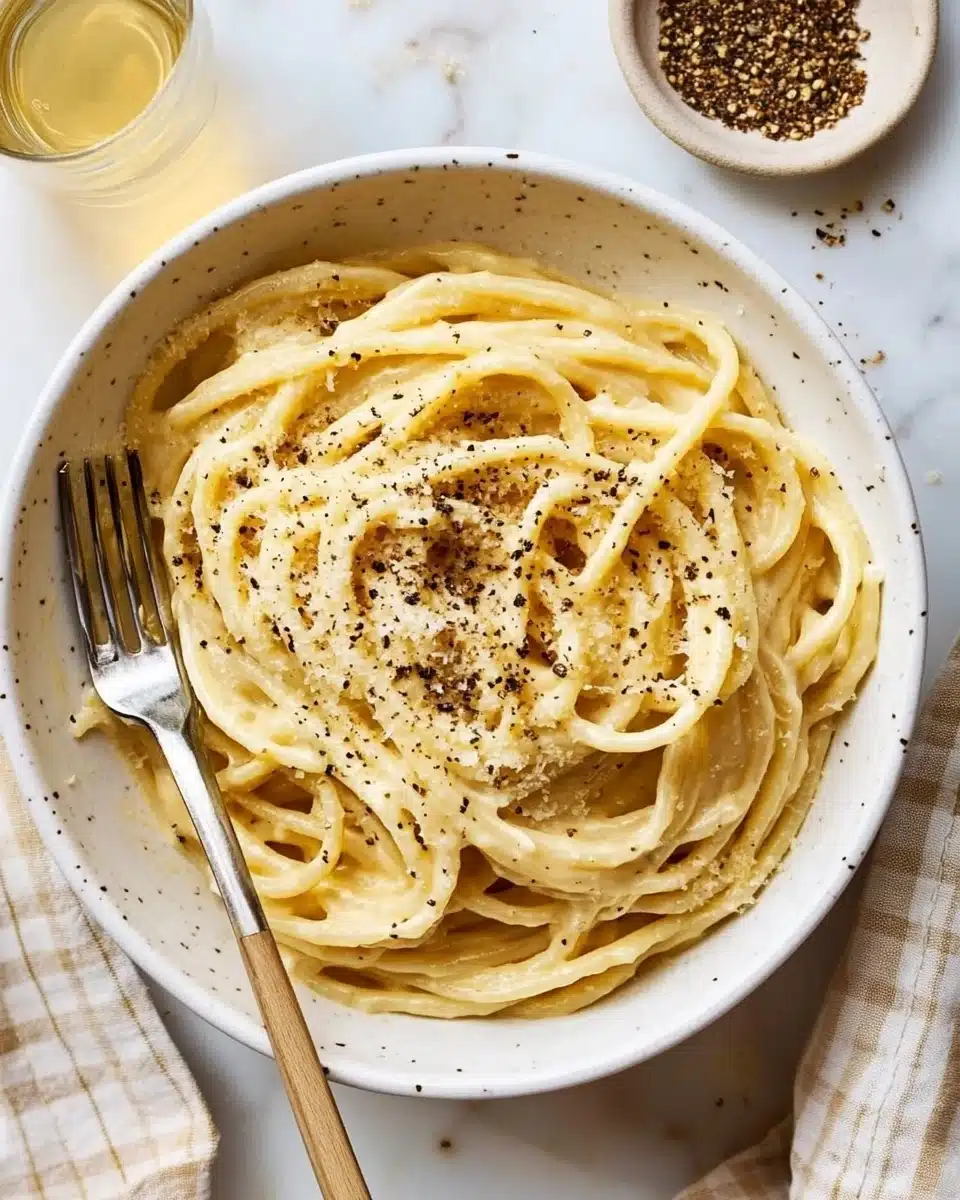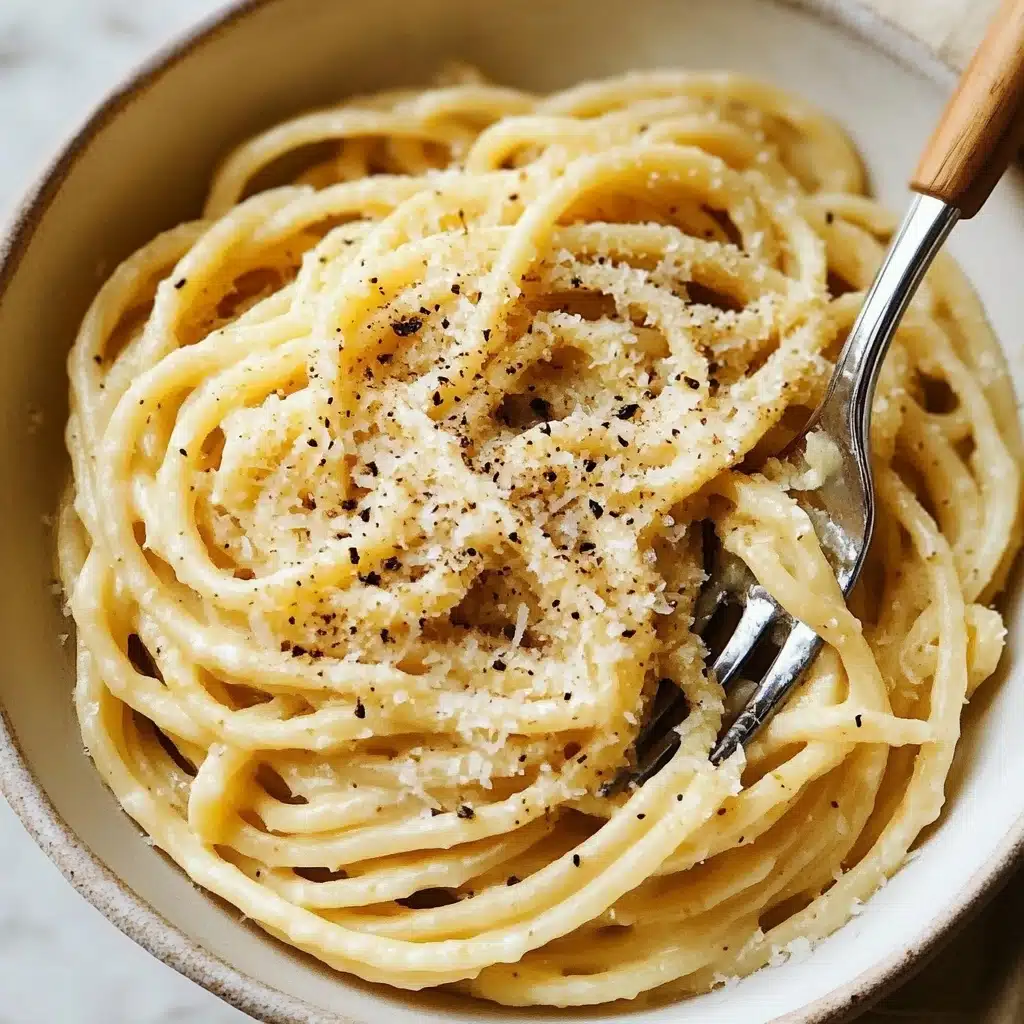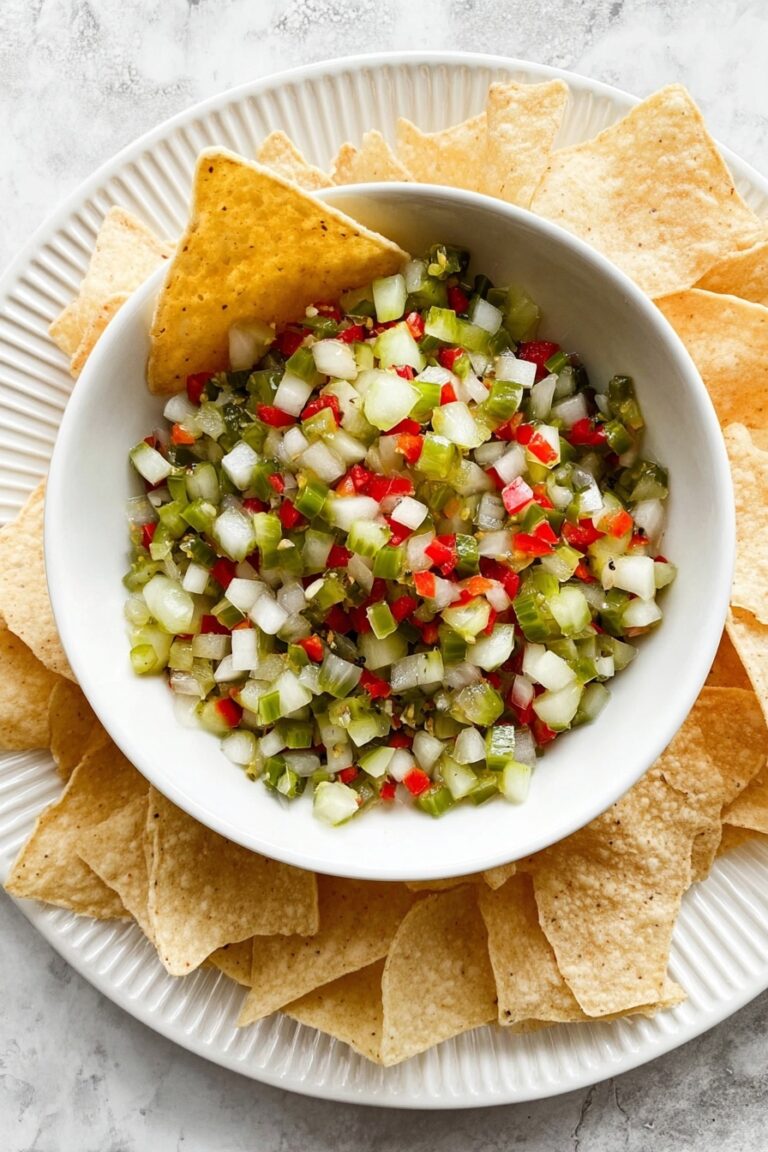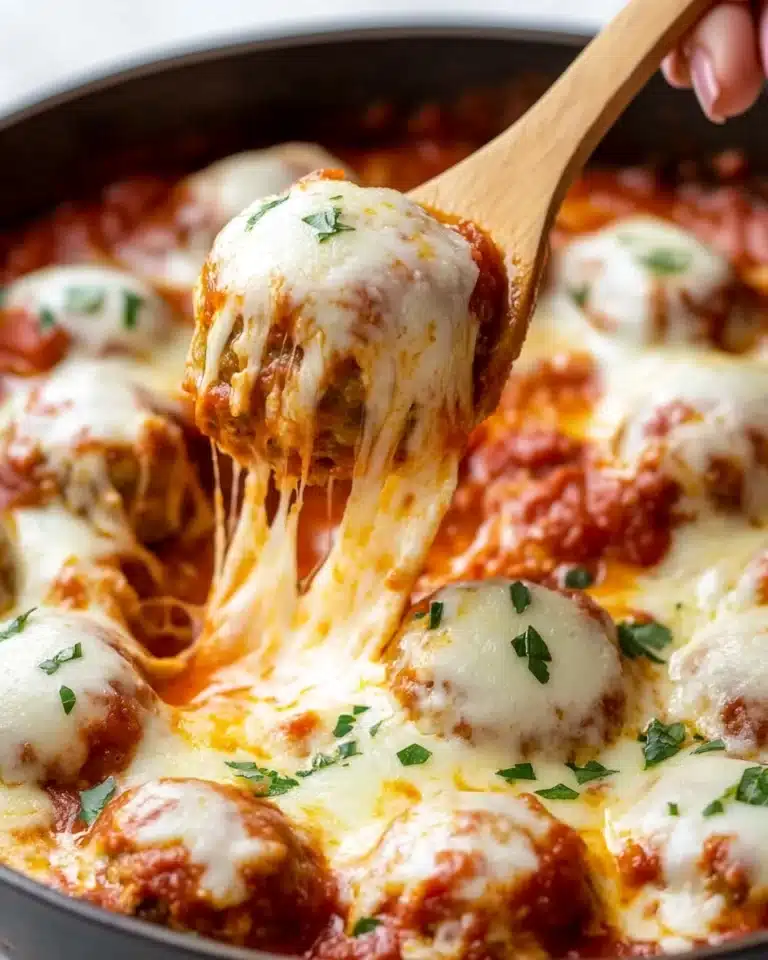There are few pleasures as comforting and deeply satisfying as a bowl of authentic Cacio e Pepe. With just a handful of humble ingredients—pasta, sharp cheese, butter, and black pepper—you’ll unlock a symphony of flavor and texture that’s both rustic and elegant. This is the beloved Roman classic you’ll want to make again and again!
Why You’ll Love This Recipe
- A Roman Classic in Minutes: This Cacio e Pepe delivers indulgence and sophistication in just 20 minutes from pantry to plate.
- Big Flavor, Tiny Ingredient List: Every component—cheese, pepper, pasta, and butter—shines with pure, bold flavor.
- Unbeatable Comfort: Creamy, peppery, luscious, and endlessly satisfying, it’s the ultimate weeknight comfort food or showstopper dinner party dish.
- Foolproof for All Cooks: With a few chef-worthy tips, you can master silky, restaurant-quality Cacio e Pepe even if you’re a beginner!
Ingredients You’ll Need
One of the true beauties of Cacio e Pepe is its simplicity—each ingredient is essential, and together they transform into pure alchemy. The secret is in using the best-quality components you can find to let every bold, nuanced flavor sing in the finished dish.
- Bucatini Pasta: Bucatini’s thick, hollow strands soak up the glossy cheese sauce and cling to every bite, though spaghetti works too if that’s what you have.
- Unsalted Butter: Butter adds creaminess and richness, helping the Pecorino melt smoothly into the pasta.
- Freshly Ground Coarse Black Pepper: Coarse, freshly ground pepper is non-negotiable for delivering that signature spicy, floral kick.
- Pecorino Romano Cheese: This sharp, salty, and crumbly sheep’s milk cheese is classic for Cacio e Pepe—it melts into a dreamy sauce that coats every noodle.
Variations
Don’t hesitate to play around and make this Cacio e Pepe your own! While traditionalists might clutch their pearls, variation is half the fun—whether you’re adapting for what’s in your pantry, your mood, or personal dietary choices.
- Switch Up the Cheese: If you aren’t a fan of Pecorino, try Parmigiano-Reggiano for a nuttier, slightly milder take—but always grate it fresh for the best results.
- Change the Pasta Shape: Spaghetti, linguine, or even rigatoni can stand in for bucatini—each gives a different texture and experience while still capturing the sauce.
- Go Extra Creamy: Stir in a splash of heavy cream for extra indulgence, making the sauce velvety and luxurious.
- Add a Flavor Twist: For a non-traditional touch, add lemon zest, a sprinkle of chili flakes, or a handful of sautéed mushrooms.
How to Make Cacio e Pepe
Step 1: Boil the Pasta
Bring a generously salted pot of water to a rolling boil, then add your bucatini. Stir occasionally to prevent sticking, and cook just until al dente—about a minute less than package instructions. Don’t forget to reserve some of that starchy pasta water before draining, since it’s liquid gold for the sauce!
Step 2: Toast the Pepper and Melt the Butter
While your pasta cooks, heat a large nonstick skillet over medium. Add the butter and the freshly ground black pepper, letting the pepper’s fragrant oils infuse the butter for 30 seconds. This quick toasting draws out deep, earthy notes you can actually smell in your kitchen.
Step 3: Combine Pasta and Sauce
When the pasta’s just barely al dente, use tongs to lift it directly from the pot into the skillet with your peppery butter. Pour in about 1/3 cup of the reserved pasta water—this starchy liquid helps emulsify and bind the cheese into a creamy sauce without any clumps or stringiness.
Step 4: Add Cheese—In Stages!
Sprinkle in half the Pecorino Romano, tossing the pasta well until it starts to melt and coat the noodles. Then gradually add the rest, continuing to toss vigorously so the cheese creates a silky, super-lustrous sauce. If it looks too thick, loosen it up with another splash or two of pasta water until everything’s glossy and irresistible.
Step 5: Serve and Savor
Spoon the piping-hot Cacio e Pepe into warm bowls, then shower with more Pecorino and a final flourish of cracked black pepper. Serve at once while it’s creamy and at its best—don’t let that glorious sauce go to waste!
Pro Tips for Making Cacio e Pepe
- Freshly Grated Cheese Only: Pre-grated cheese has anti-caking agents that prevent melting—always grate Pecorino Romano yourself for that dreamy, creamy sauce.
- Reserve Extra Pasta Water: Starch-rich pasta water is your magic potion—save more than you need, so you can adjust the sauce’s consistency with a splash as you toss.
- The Art of Tossing: Use tongs and swirl the pasta constantly when adding cheese, off the heat, to prevent clumping and achieve perfect emulsification.
- Coarse, Fresh Pepper Matters: Crack your peppercorns fresh! Pre-ground pepper just can’t deliver the pungency and complexity Cacio e Pepe deserves.
How to Serve Cacio e Pepe
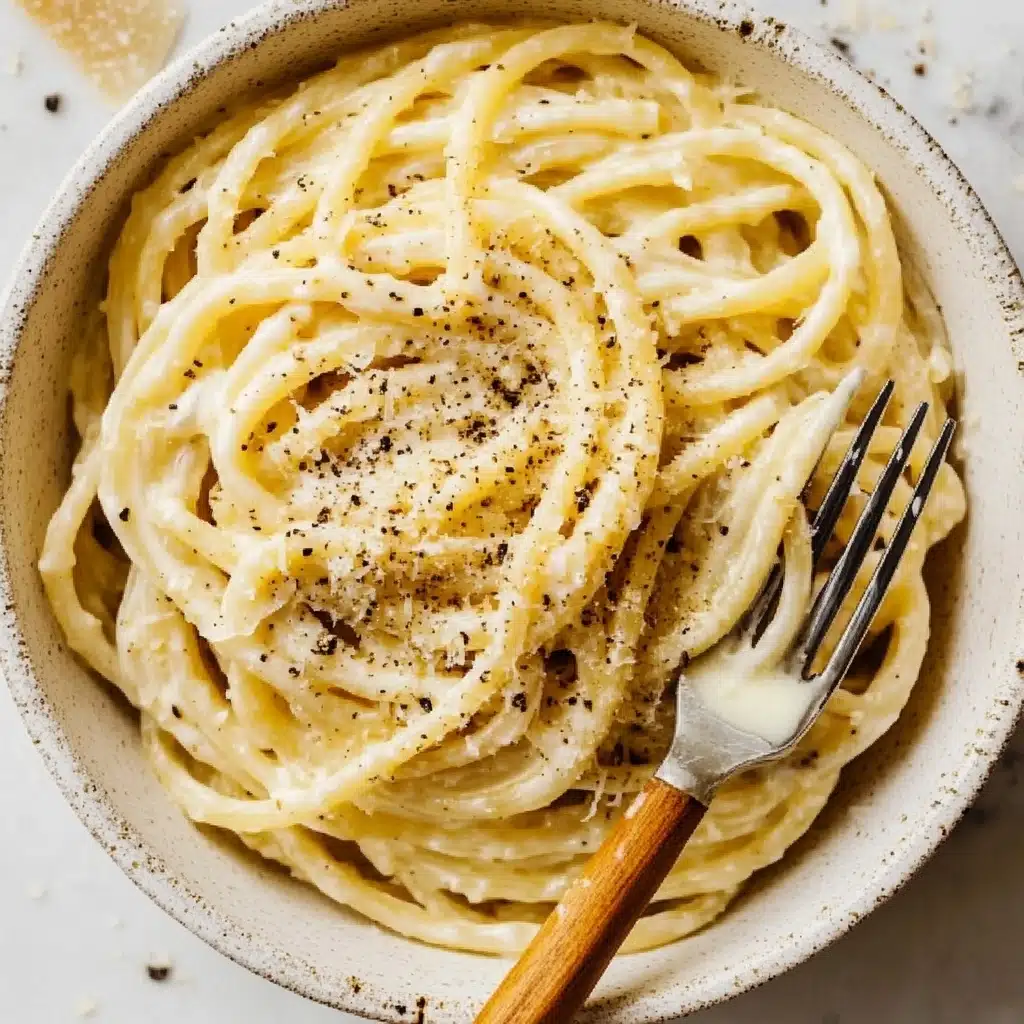
Garnishes
Garnish your Cacio e Pepe with a tumble of ultra-fine Pecorino Romano shavings and an extra grind or two of coarse black pepper right before serving. If you want to go a little fancy, a sprinkle of freshly chopped parsley or a drizzle of best-quality olive oil adds color and extra aroma without stealing the spotlight.
Side Dishes
The richness of Cacio e Pepe pairs beautifully with a crisp, simple green salad—think arugula with lemon, salt, and olive oil. A side of roasted asparagus or blistered cherry tomatoes works wonders, as does fresh crusty bread to wipe every trace of sauce from your bowl!
Creative Ways to Present
For a little culinary flair, twirl each serving into a pasta nest and plate individually, or serve in mini appetizer-sized portions for a party. You can also try serving Cacio e Pepe alongside grilled protein or tuck into a hollowed Parmesan wheel for an unforgettable, restaurant-worthy presentation.
Make Ahead and Storage
Storing Leftovers
If you happen to have leftovers (good luck!), transfer them to an airtight container and refrigerate for up to 2 days. While it’s best enjoyed fresh, Cacio e Pepe can be revived with a little care and pasta water.
Freezing
I generally wouldn’t recommend freezing Cacio e Pepe—the cheese-based sauce can become grainy and separate once thawed. For the creamiest results, enjoy this soul-warming pasta fresh whenever possible!
Reheating
To reheat, place the pasta in a skillet with a splash of water or milk and toss over low heat. Stir gently until warmed through and creamy again; just be careful not to overcook or the sauce may break.
FAQs
-
Can I use parmesan cheese instead of Pecorino Romano?
Absolutely! While Pecorino Romano is the traditional cheese for authentic Cacio e Pepe, parmesan (Parmigiano-Reggiano) makes for a delicious and slightly milder alternative. Just be sure to grate it fresh for optimal melting and flavor.
-
How do I keep my sauce from getting clumpy?
The trick is to add the cheese gradually, off the heat, while tossing constantly and using plenty of hot, starchy pasta water. This helps emulsify the fats and prevents the cheese from seizing up. Always freshly grate your cheese for the creamiest results!
-
Is there a gluten-free way to make Cacio e Pepe?
Yes! Simply use your favorite gluten-free long-cut pasta. All the other ingredients—cheese, butter, and pepper—are naturally gluten-free, so you can still enjoy the dish’s signature flavors.
-
What’s the best pasta shape for Cacio e Pepe?
Bucatini is traditional for its chewy bite and hollow center, but spaghetti or linguine are also fantastic choices. The most important thing is using a shape that grips the cheesy, peppery sauce.
Final Thoughts
Once you taste the magic of homemade Cacio e Pepe, you’ll see why it holds a cherished place in Italian hearts—and mine, too. Whether it’s your first or your fiftieth time making it, the transformation from four common ingredients into such extraordinary comfort never fails to delight. Treat yourself to this Roman classic, and don’t forget to share a twirl with someone you love!
Print
Cacio e Pepe Recipe
- Prep Time: 5 minutes
- Cook Time: 15 minutes
- Total Time: 20 minutes
- Yield: Serves 3 to 4
- Category: Stovetop
- Method: Stovetop
- Cuisine: Italian
Description
A classic Roman pasta dish, Cacio e Pepe is a simple yet luxurious recipe featuring bucatini pasta tossed in a creamy, cheesy sauce with a kick of black pepper.
Ingredients
Pasta:
- 8 ounces bucatini pasta
Sauce:
- 2 tablespoons unsalted butter
- 1 teaspoon freshly ground coarse black pepper, plus more for serving
- 2 ounces finely grated Pecorino Romano cheese, about 1 cup, plus more for serving
Instructions
- Boil Water and Cook Pasta: Bring a large pot of salted water to a boil. Cook the pasta until al dente.
- Prepare Sauce: In a skillet over medium heat, melt butter and cook black pepper for 30 seconds. Remove from heat.
- Toss Pasta: Transfer al dente pasta to the skillet. Add pasta water and half the cheese. Toss until a creamy sauce forms. Add remaining cheese and toss until coated.
- Serve: Top with more pepper and cheese before serving.

